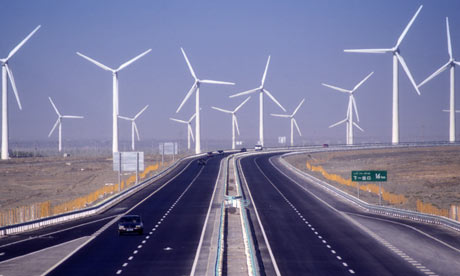 Having trouble with lots of carbon numbers and Copenhagen claims? A solution is the World Bank's Data Visualizer. It does a great job in turning numbers into pictures.
Having trouble with lots of carbon numbers and Copenhagen claims? A solution is the World Bank's Data Visualizer. It does a great job in turning numbers into pictures.It's hard to visualise greenhouse gas emissions, and more difficult still to conceptualise the numbers over time, across countries and against other important measures like economy and health. In the image, the bubble size is total emission plotted against economy (horizontal) and per person emissions (vertical).
Go to the Data Visualizer site, chose what you want to compare - from the left hand side menu - and then press play and watch the changes over time.
And a suggestion for the World Bank. Add future scenarios to this visualiser. It would be great to see the data map a path for contraction of total greenhouse emissions and, convergence to equivalent per person emissions, in the future.


































